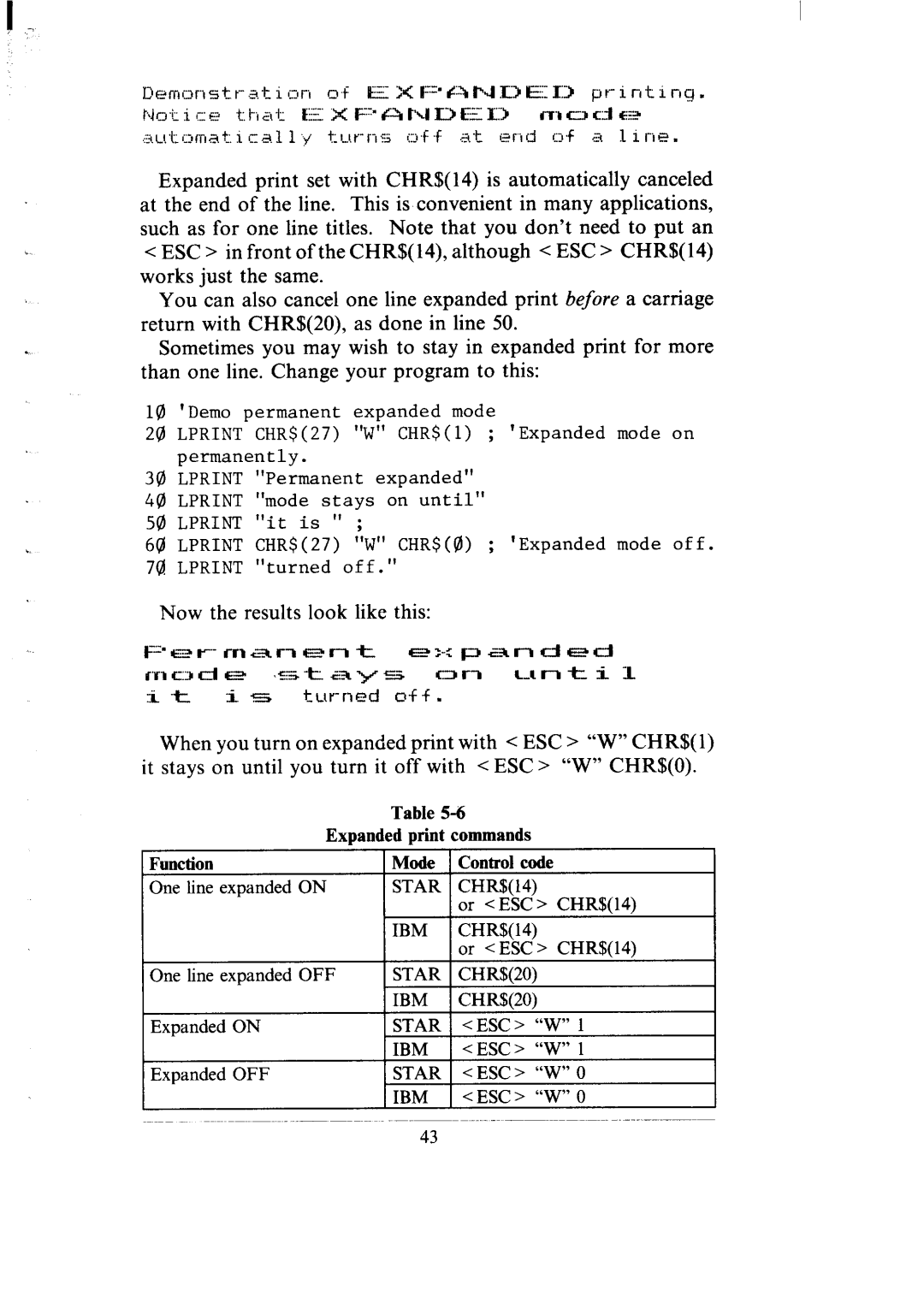
Expanded print set with CHR$(14) is automatically canceled at the end of the line. This is convenient in many applications, such as for one line titles. Note that you don’t need to put an
<ESC > in front of the CHR$( 14), although < ESC > CHR$( 14) works just the same.
You can also cancel one line expanded print before a carriage return with CHR$(20), as done in line 50.
Sometimes you may wish to stay in expanded print for more than one line. Change your program to this:
10 'Demo permanent expanded mode
20 LPRINT CHR$(27) "W" CHR$(l) ; 'Expanded mode on permanently.
30 LPRINT "Permanent expanded"
49)LPRINT "mode stays on until"
50 LPRINT "it is " ;
60 LPRINT CHR$(27) "W" CHR$(@) ; 'Expanded mode off. 7@ LPRINT "turned off."
Now the results look like this:
I=’ Ez r- | |||
C’YIc3 d | EE!- |
| |
it | .i 5 | turned | off . |
When you turn on expanded print with < ESC > “W” CHR$( 1) it stays on until you turn it off with < ESC > “W” CHR$(O).
| Table |
|
| |
Expanded print commands |
|
| ||
Function | Mode | Control code |
| |
One lineexpandedON | STAR | CHR$( 14) |
| |
|
| or < ESC > | CHR$(14) | |
| IBM | CHR$(14) |
|
|
|
| or < ESC > | CHR$(14) | |
One lineexpandedOFF | STAR | CHR$(20) |
|
|
| IBM | CHR$(20) |
|
|
Expanded ON | STAR | <ESC > | “w” 1 | |
| IBM | <ESC> | “W” 1 | |
Expanded OFF | STAR | < ESC > | “W” 0 | |
| IBM | <ESC> | “w” 0 | |
43
